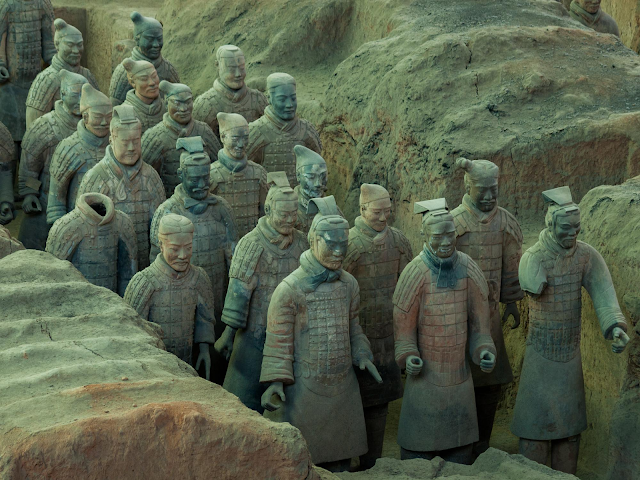China Tourism | Tourist Places, Best Time to Visit
China is a vast and diverse country with a rich history and vibrant culture. From ancient landmarks to modern cities, China offers a unique blend of old and new. This guide will explore some of the top tourist destinations in China and provide insights into the best times to visit.
Top Tourist Places in China
1. The Great Wall of China
The Great Wall is one of the most iconic landmarks in the world. Stretching over 13,000 miles, it offers breathtaking views and a glimpse into China's ancient history.
2. The Forbidden City
Located in Beijing, the Forbidden City is a magnificent palace complex that served as the home of emperors for over 500 years. Its stunning architecture and rich history make it a must-visit destination.
3. The Terracotta Army
In Xi'an, the Terracotta Army is a collection of thousands of life-sized statues that were buried with the first Emperor of China. This archaeological wonder is a testament to China's ancient craftsmanship.
4. Zhangjiajie National Forest Park
Famous for its towering sandstone pillars, Zhangjiajie National Forest Park inspired the floating mountains in the movie "Avatar." It's a paradise for nature lovers and adventure seekers.
5. The Li River and Guilin
The Li River in Guilin is known for its picturesque landscapes and limestone karsts. A cruise along the river offers stunning views and a peaceful retreat from bustling city life.
6. The Bund in Shanghai
The Bund is Shanghai's waterfront promenade, lined with colonial-era buildings. It offers spectacular views of the modern skyline and is a great place for a leisurely stroll.
Best Time to Visit China
China's climate varies significantly across its vast territory, so the best time to visit depends on your destination.
Spring (March to May)
Spring is a wonderful time to visit most parts of China. The weather is mild, and flowers are in full bloom. It's an ideal time for outdoor activities and exploring nature.
Summer (June to August)
Summer can be hot and humid, especially in southern China. However, it's a great time to visit northern regions and enjoy festivals. Be prepared for crowds as it's a popular travel season.
Autumn (September to November)
Autumn is considered the best time to visit China. The weather is pleasant, and the landscapes are adorned with autumn foliage. It's perfect for sightseeing and outdoor adventures.
Winter (December to February)
Winter can be cold, especially in northern China. However, it's a great time to experience Chinese New Year festivities and enjoy winter sports in regions like Harbin.
Conclusion
China is a land of contrasts, offering a wide range of experiences for travelers. Whether you're exploring ancient wonders or modern marvels, there's something for everyone. Plan your trip according to the best times to visit, and you'll be rewarded with unforgettable memories.
FAQs
Q: Do I need a visa to visit China?
A: Yes, most travelers require a visa to enter China. Be sure to check the visa requirements for your country before planning your trip.
Q: What is the currency used in China?
A: The official currency in China is the Chinese Yuan (CNY).
Q: Is it safe to travel to China?
A: Yes, China is generally a safe destination for travelers. However, it's always wise to take standard precautions and stay informed about any travel advisories.
Q: What language is spoken in China?
A: Mandarin Chinese is the official language. In major tourist areas, you can find English-speaking guides and signs.
Q: Can I use credit cards in China?
A: Credit cards are widely accepted in major cities and tourist areas. However, it's advisable to carry some cash for smaller establishments and rural areas.







Comments
Post a Comment